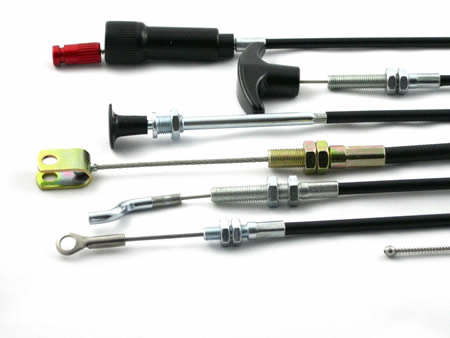Cable assemblies are groups of cables put together to serve a particular purpose. Other names for cable assemblies are custom wire rope and wire rope lanyards. These cables are packaged together in the ideal length and direction to speed up and simplify installation. Depending on the use, they can come in various sizes, colors, and lengths, along with different cable constructions.
Guidelines for Choosing the Right Cable for Cable Assembly
Following are some important considerations to keep in mind while selecting the right cable:
For Cable Assembly Design:
- Keep in mind how much workload the cable will bear, forces of abrasion upon it, and whether it needs to be flexible for its use.
- Do you want to lean towards cost savings or high quality?
- Ensure that the safety ratio is carefully managed. A 5 to 1 ratio breaking strength ratio is recommended for most applications
- The diameter of the small wires found in the bundle is inversely proportional to its flexibility, meaning if more wires are chosen for cable assembly, they will be smaller. For example, ⅛” 7X19 cables will be more flexible and have more wires than ⅛” 7X7, but the latter will be more abrasion resistant.
- If tensile strength is the primary concern, then galvanized steel is slightly better than stainless steel; in the case of corrosion resistance, stainless steel outperforms galvanized steel
- To maintain flexibility and a bigger diameter, 7×19 is necessary because coatings will add some stiffness. Pebax and Nylon 11 coatings, which are incredibly strong and flexible, are ideal for pulley systems, such as those found in exercise machines.
- The cost and quality of the cable go up with tighter length tolerances, as this increases the amount of labor dramatically.
For Control/Push-Pull Assembly Design:
- The workload should come under primary consideration and attention for a control cable assembly or push-pull cable.
- The assembly should be routed carefully, keeping in mind the bend radii and the anchoring of the assembly.
- The dimensional specifications, such as the length and diameter of the inner wire and conduit, along with how much the wire will travel, are equally important considerations.
- Knowing the precise measurements of the control assembly is important when making design decisions. After obtaining the prototype of the required push-pull control assembly, it may be required to make a few minor adjustments.
- To minimize the impacts of friction within the push-pull assembly, the conduit bend radius should be maximized while building a working model of the push-pull control assembly. With a lesser load, lighter casings will be more flexible and slack. There won’t be much flexibility with higher loads and heavier casings.
Applications of the Cable Assemblies
Tyler Madison cable assemblies find their use in a long list of applications. Following are some of the prominent applications of cables assemblies:
- Accelerating
- Actuating
- Choke
- Connecting
- Driving
- Hanging
- Lifting
- Supporting
- Suspending
- Regulating
- Restraining
- Winding

